Top 10 Most Famous Indian Museums In 2022
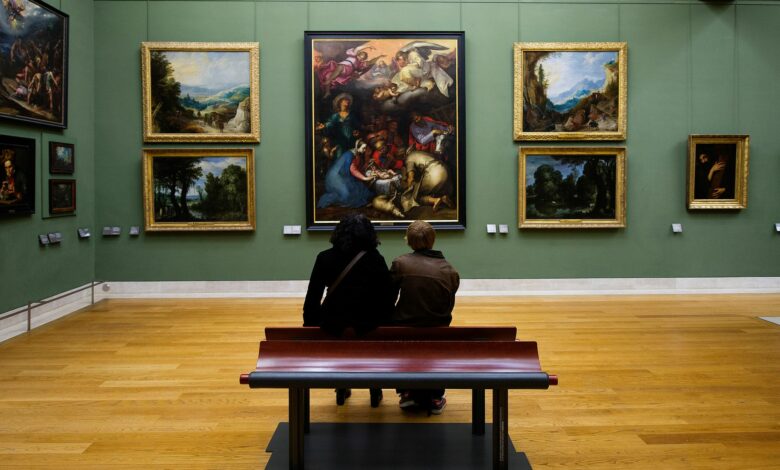
Top 10 Most Famous Indian Museums In 2022
A museum is a structure or organisation that houses and exhibits a collection of artefacts and other aesthetic, cultural, historical, or scientific items. Many public museums make these artefacts available to the public for viewing through permanent or temporary exhibits. The world’s largest museums are found in major cities, but thousands of smaller museums can be found in towns, villages, and rural areas.
Museums serve various purposes, including collection conservation and recording, supporting researchers and professionals, and catering to the general public. Serving researchers is not just for scientific purposes but also the benefit of the general public.
Art, natural history museums, science museums, war museums, and children’s museums are just a few examples. There are more than 55,000 museums in 202 countries, according to the International Council of Museums (ICOM).
Museums are divided into several categories
The following are the different types of museums:
Fine arts: They include all forms of paintings, drawings, sculpture, and architecture, among other things.
Historical Museums: These museums depict historical events, periods, and characters, among other things. Weapons, statues, and objects made of stone and other materials are their possessions.
Science and Technology: This category includes all items that show the evolution of history, science, and technology, such as dinosaur fossils.
Museum-house: It is housed at a famous person’s birthplace, such as the Sabarmati ashram, Dr Bhim Rao Ambedkar’s residence, Tipu Sultan Palace, and so on.
Archaeological- Museum: It contains all the objects related to history.
General Museum: Multidisciplinary museums contain more than one theme and are hence referred to as general museums.

Museums’ Importance: Preserving Local Culture
Museums are vital to preserving local culture, which can be recorded and remembered regardless of its future through proper documentation and artefact preservation. People of varied cultural origins can also share and understand it. Here are just a few reasons museums are so important for cultural preservation.
- They Document Daily Life
One of the crucial aspects of preserving culture is recording daily life. With the rate at which cultures are vanishing, a cultural group’s sole hope for reclaiming its culture is to protect daily life carefully. Rituals, religion, gastronomy, art, and other aspects that distinguish a culture are all part of everyday life. Regardless of the museum, cultural items, art, music, or technology are almost always on display.
- They Educate Others on Local Culture
To be appreciated and survive globalisation, those of the majority culture must be taught about minority cultures and their way of life. The most incredible method to do this is to exhibit local culture in a museum respectfully. Culture loss appears to be lessening due to an educated public that values minority cultures.
Museums are also a great place to take kids for entertainment and education. They provide hands-on learning with trained workers and visual aids to keep any child’s attention, and they will almost certainly give you more ideas for incorporating hands-on learning into your child’s education once you leave. The younger a youngster is taught the value of accepting and appreciating diversity, the more likely they will grow up to be compassionate and tolerant people.
- They Display Alternative Perspectives on History
Many popular history courses and publications are skewed, focusing on the dominant culture’s perspective while disregarding the thousands of minority civilisations with great stories to tell. Museums present histories, timelines, and perspectives that you may not have heard before, with the potential to change the opinions of those who have never been educated outside of conventional society.
Any well-informed person should be able to see things from a different perspective. When one’s views are limited to those of one’s own culture, one’s options are severely limited.
- They Connect Those of Different Backgrounds
Others with that ancestry and people interested in learning about that heritage who come from a different background will visit museums searching for information about other cultures. Museums of history and culture bring people together, forming a support network for various minorities and organisations. Cultures and languages do not perish because of support networks like these.
Museums and their visitors play an essential role in the fight against cultural and linguistic extinction. When a minority culture feels inferior or unimportant, it tries to make its offspring look like the majority culture’s youngsters. We are already striving to avert cultural loss by using a museum to foster respect and interest in these minority cultures.
Following are the Top 10 Most Famous Museums In India In 2022
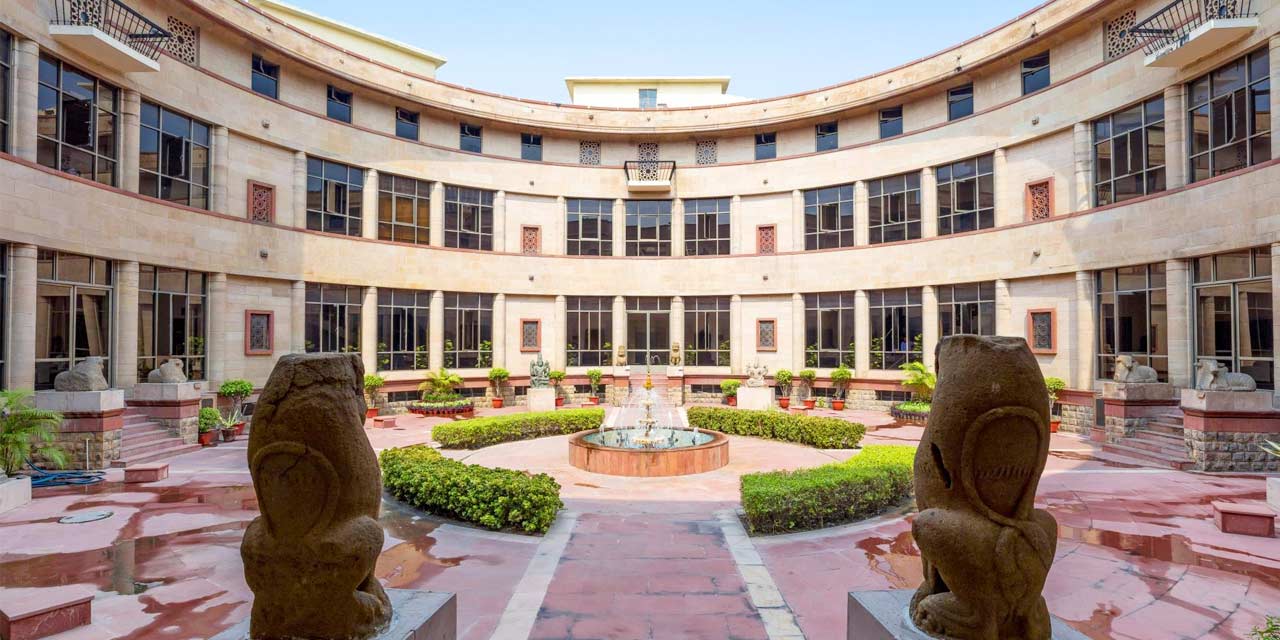
1. National Museum, New Delhi
One of India’s largest museums in the National Museum in New Delhi, commonly known as the National Museum of India. It was founded in 1949 and housed a wide range of items, from prehistoric artefacts to contemporary works of art. It is run by the Government of India’s Ministry of Culture. The National Museum’s blueprint was done by the Gwyer Committee, which the Indian government established in 1946. The museum houses about 200,000 items, most of which are Indian and include those from other countries, spanning over 5,000 years.
The National Museum Institute of History of Art, Conservation, and Museology, founded in 1983 and a university since 1989, offers Masters and Doctoral level art history, conservation, and museology courses.
The National Museum currently has several departments:
- Pre-History Archaeology
- Archaeology
- Manuscripts
- Numismatics & Epigraphy
- Paintings
- Arms & Armour
- Decorative Arts
- Central Asian Antiquities
- Pre-Columbian Art
- Jewellery
- Anthropology
- Anubhav
- Education
- Public Relations
- Publication
- Conservation
- Display
Archaeology (stone, bronze, and terracotta sculptures), arms, armour, decorative arts, jewellery, manuscripts, miniatures, and Tanjore paintings, textiles, numismatics, epigraphy, Central Asian antiquities, anthropology, Pre-Columbian American, and Western Art Collections are all represented in the National Museum’s collections.
While the National Museum possesses over 200,000 exhibits, only about 7% of them are on display right now. The remainder is rotated or displayed in temporary exhibitions regularly. It will show another three to four per cent of the treasures in the last phase of enlargement. The Indian National Museum is stunning and well worth a visit.
Ganesh Bikaji, an architect, created the National Museum’s current structure.
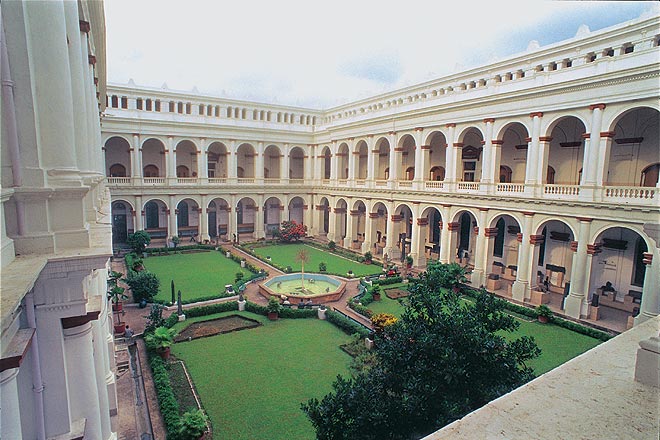
2. Indian Museum, Kolkata
The Imperial Museum at Calcutta, sometimes known as the Indian Museum in colonial-era writings, is the world’s ninth oldest museum and India’s oldest and largest museum. It is located in Central Kolkata, West Bengal, India. Rare antiques, armour and jewellery, fossils, skeletons, mummies, and Mughal paintings can all be found there. The Asiatic Society of Bengal was formed in 1814 in Kolkata (Calcutta), India. Nathaniel Wallich, a Danish botanist, was the first curator.
Indian art, archaeology, anthropology, geology, zoology, and economic botany are the six sections, each with thirty-five galleries of cultural and scientific artefacts. In the galleries of these parts, many rare and exceptional specimens, both Indian and trans-Indian, relevant to humanities and natural sciences are conserved and presented. The art and archaeology divisions, in particular, house internationally significant holdings.
It is a self-governing body within the Ministry of Culture of the Indian government. Shri Arijit Dutta Choudhury, the current Director of the Indian Museum, is the Director-General of NCSM and the Director-General of the National Library.
The Board of Trustees’ Directorate oversees the Cultural divisions, which include Art, Archaeology, and Anthropology. The geological survey of India, the zoological survey of India, and the Botanical Survey of India are in charge of the three other science sections. The museum directorate’s eight coordinating service units are education, preservation, publication, presentation, photography, medical, modelling, and library.
This multipurpose institution with diversified operations is classified as an Institute of National Importance under the seventh schedule of the Indian Constitution.
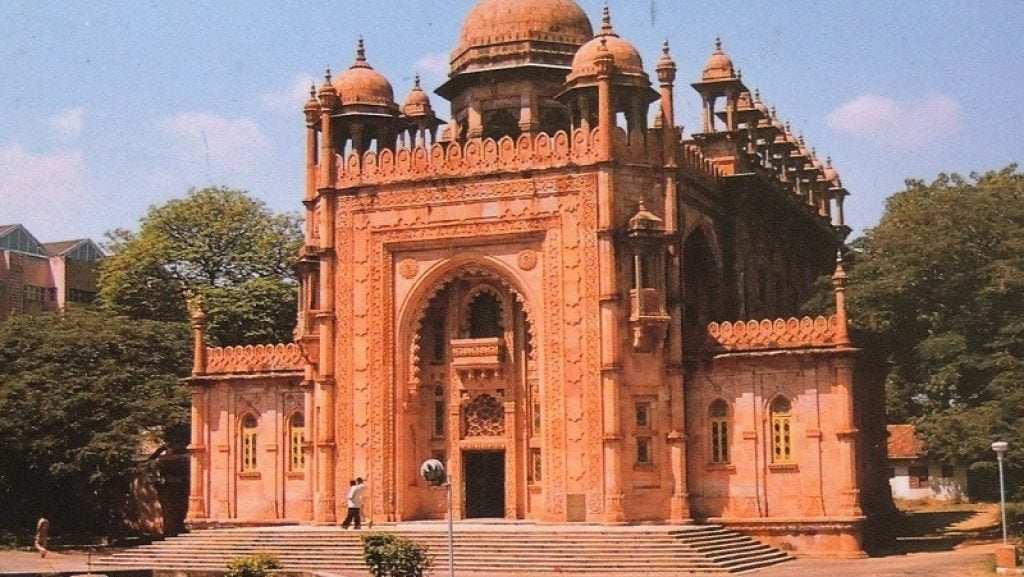
3. Government Museum, Chennai
The Government Museum, Chennai, often known as the Madras Museum, is human history and culture museum in Chennai, India, located in the Government Museum Complex in the Egmore neighbourhood. It was founded in 1851 and is India’s second oldest museum, after the Indian Museum in Kolkata. It is especially well-known for its archaeological and numismatic collections. Outside of Europe, it has the world’s greatest collection of Roman artefacts. The gigantic Museum Theatre is one of the most spectacular of them.
The National Art Gallery is also located on the grounds of the museum. It was constructed in Indo-Saracenic architecture and held rare European and Asian paintings by prominent artists, including Raja Ravi Varma’s. In 2018, it had 0.6 million visitors. It features Asia’s most extensive collection of bronze idols, with 500 going back to 1000 BCE.
The Pantheon complex, or “public assembly halls,” is where the museum is located. It’s on Pantheon Road in Egmore, in the Government Museum Complex. The complex’s name is also on the museum’s road. The Connemara Public Library and the National Art Gallery are also located within the Government Museum Complex.
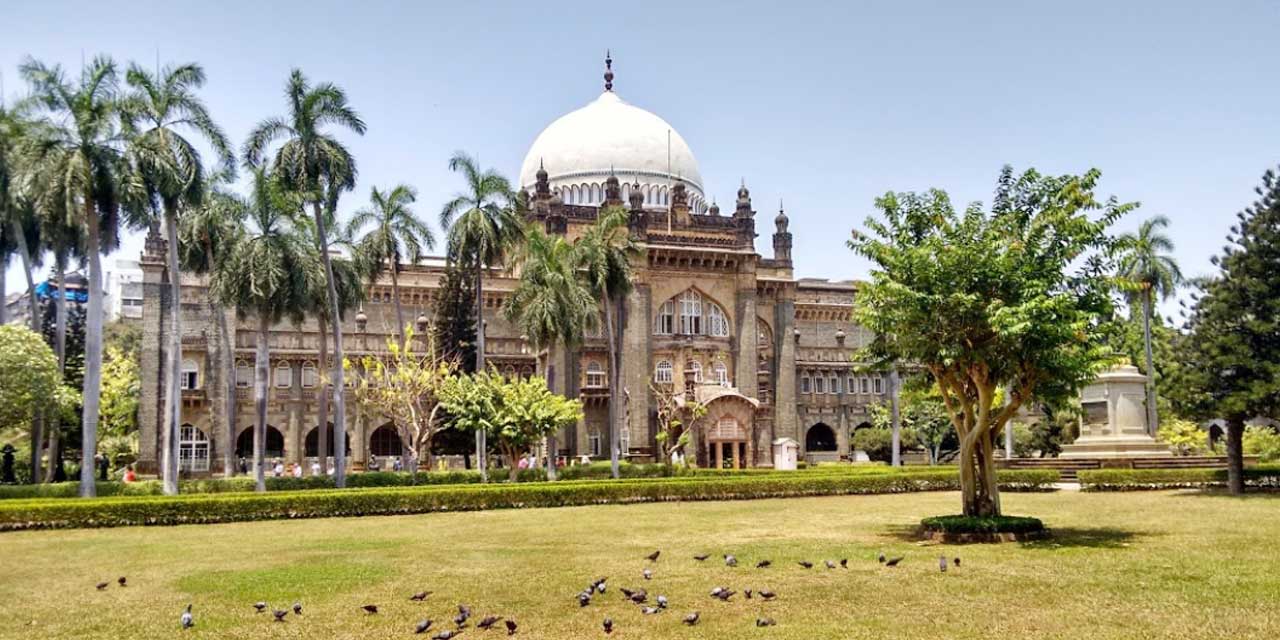
4. Chhatrapati Shivaji Maharaj Vastu Sanghralaya
Maharaj Chhatrapati Shivaji Vastu Sangrahalaya, formerly known as the Prince of Wales Museum of Western India, is a museum in Bombay (Mumbai) that chronicles India’s history from prehistoric to present times.
It was founded in the early twentieth century by prominent Mumbai citizens, with official assistance, to honour the visit of George V, Prince of Wales at the time. It’s near the Gateway of India, in the heart of South Mumbai. In 1998, the museum was renamed after the founder of the Great Maratha Empire, Chhatrapati Shivaji Maharaj.
The structure is designed in the Indo-Saracenic architectural style, incorporating aspects from other architectural traditions such as Mughal, Maratha, and Jain. A palm-tree-lined courtyard flanks the museum with formal flower beds.
Approximately 50,000 exhibits of ancient Indian history and artefacts from other countries are housed in the museum, divided into three sections: art, archaeology, and natural history. The museum exhibits artefacts from the Indus Valley Civilization and other ancient Indian antiquities from the Guptas, Mauryas, Chalukyas, and Rashtrakuta dynasties.
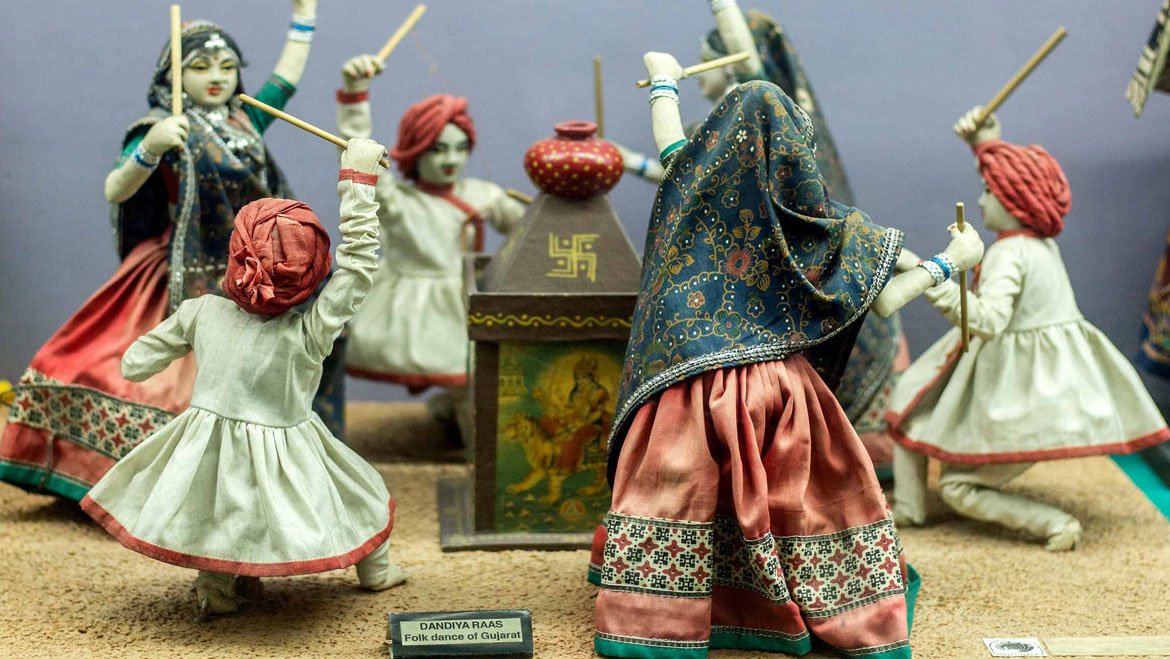
5. Shankar’s International Dolls Museum
The International Dolls Museum is a significant collection of dolls founded by political cartoonist K Shankar Pillai. Doll collections are divided into two categories. Dolls from western countries such as the United Kingdom, the United States of America, Australia, New Zealand, and the Commonwealth of Independent States make up one half. In contrast, dolls from various Asian countries, the Middle East, Africa, and India, make up the other.
The Dolls Museum’s primary collection consists of 150 different Indian costume dolls made in the museum’s factory. This workshop’s artisans construct dolls to the highest standards, creating a symphony of physical traits, clothes, and embellishments.
Characters from Kathakali, one of India’s most unique traditional dances, are featured in the collection, complete with extravagant costumes. Boys and Girls festival dolls from Japan, imitation Dolls of the Queen’s collection (from the UK), Maypole Dancers from Hungary, Kabuki and Samurai dolls from Japan, Flamenco dancers from Spain and Kandy Pehara from Sri Lanka are among the dolls of great interest.
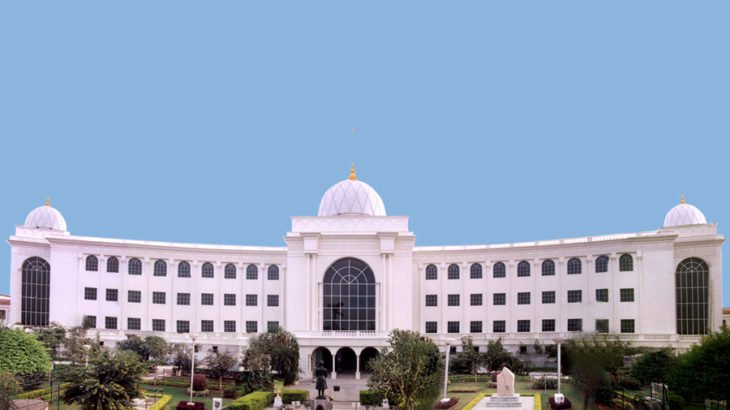
6. Salar Jung Museum
The Salar Jung Museum is an art museum in Hyderabad, Telangana, India, located near Dar-ul-Shifa on the Musi River’s southern bank. It is one of India’s three national museums. After the death of Salar Jung III, it was endowed to the nation as a private art collection of the Salar Jung family. It was first opened on December 16, 1951.
Sculptures, paintings, carvings, fabrics, manuscripts, ceramics, metallic objects, carpets, furniture from Japan, China, Burma, Nepal, India, Persia, Europe, and North America are among the collection’s highlights.
Nawab Mir Yousuf Ali Khan, Salar Jung III (1889–1949), a nobleman from Hyderabad’s Salar Jung family, served as PM of Hyderabad during the Nizam’s reign. Around the course of thirty-five years, he spent a significant portion of his money collecting relics from all over the world.
The items were left at the Nawab’s ancestral castle, Diwan Devdi after he died in 1949. The collection was previously displayed in the Salar Jung Museum, inaugurated by Jawaharlal Nehru on December 16, 1951.
According to legend, the current collection represents only half of the Nawab’s original art collection. Because the Nawab relied on his personnel to keep a vigil, his employees syphoned off some of it.
Under the Salar Jung Museum Act of 1961, the museum was moved to its current location in Dar-ul-Shifa in 1968 and is now run by a Board of Trustees, with the Governor of Telangana serving as ex officio chairperson. More art items were lost or stolen during the museum’s relocation from Diwan Devdi to its current location.
The museum was designated as a manuscript conservation centre in 2003 after signing a memorandum of understanding with the National Mission for Manuscripts.
A fire broke out in an auditorium on the museum grounds in 2006. It was swiftly put out, and no antiques were harmed as a result. The fire safety facilities were enhanced as a result of the occurrence.
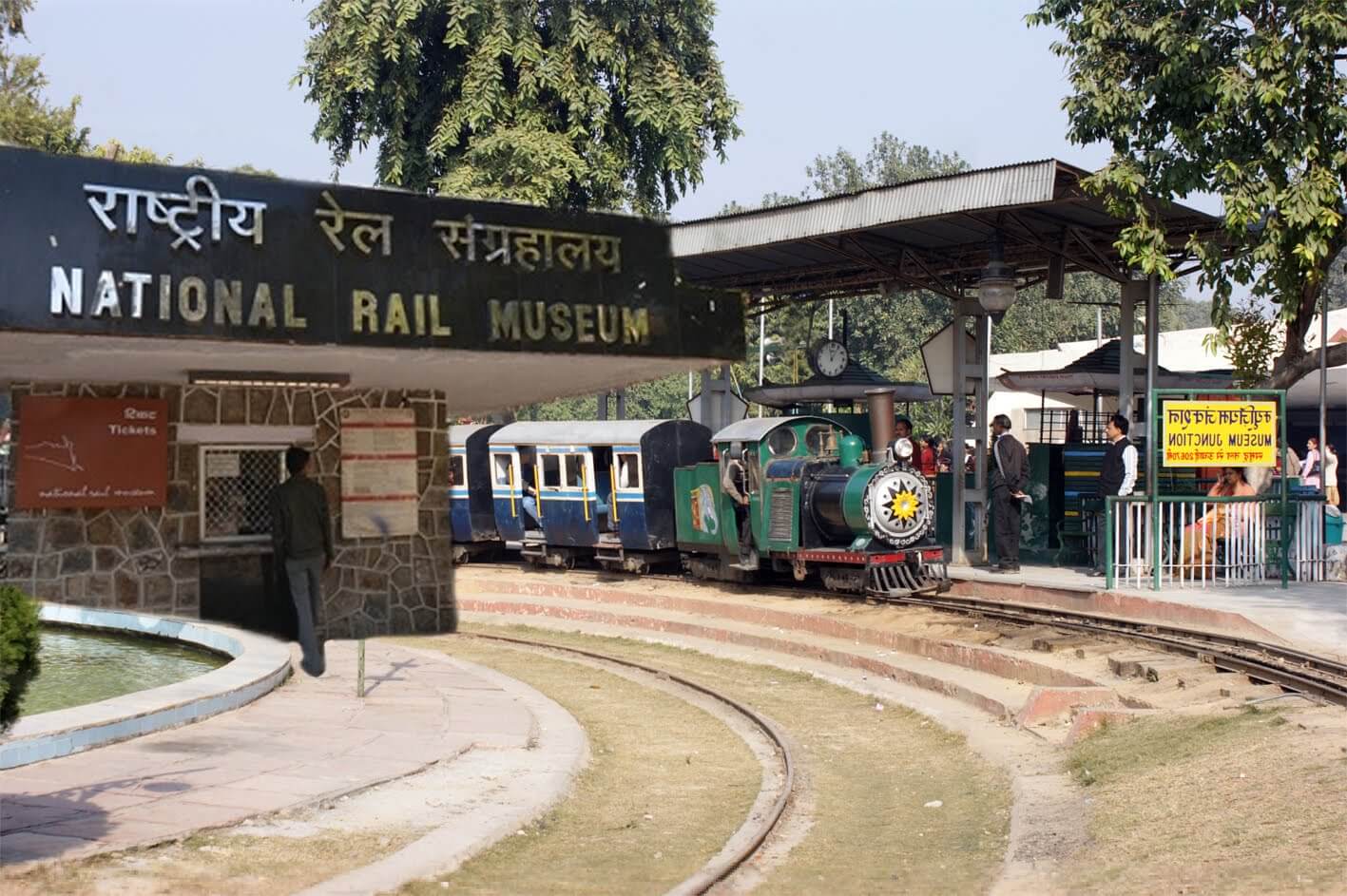
7. National Rail Museum, New Delhi
Exhibits about the history of rail transport in India can be found in the National Rail Museum in Chanakyapuri, New Delhi. It first opened its doors on February 1, 1977. The museum covers an area of over 11 acres, and the indoor gallery consists of an octagonal building with six display halls and a vast open area designed to resemble a train yard. Except for Mondays and national holidays, it is open every day.
Under the guidance of rail enthusiast Michael Graham Satow, a Transport Museum was first proposed in 1962. In 1970, the concept became a reality, and on October 7, 1971, the then-President of India, V. V. Giri, lay the foundation stone at the museum’s current location in Chanakyapuri, New Delhi. The Rail Transport Museum was founded in 1977 by Kamalapati Tripathi, the minister of public transportation.
The museum was supposed to be part of a broader museum covering the history of India’s railways, motorways, airways, and canals, but that never transpired, and it was renamed the National Rail Museum in 1995.
Auditorium: The museum boasts a state-of-the-art auditorium that can seat 200 people.
VIP Lounge: The museum offers a state-of-the-art air-conditioned meeting hall that can accommodate 20-25 people.
The Rails: The Rail is a restaurant located within the museum. It is situated in a copy of the main building of the Chhatrapati Shivaji Terminus. The restaurant represents the union of 42 independent railway firms owned by princely states of India and the British East Indian Company to establish Indian Railways. According to the Maharaja of Gwalior, a silver model train moved down the dining table and provided food to the royal guests. A steam locomotive chugs around the diner, and meals are served at tables named after historic stations across the country.
Small scale models of rolling stock, literature, garments, frames and prints, and other items are available in the souvenir shop.
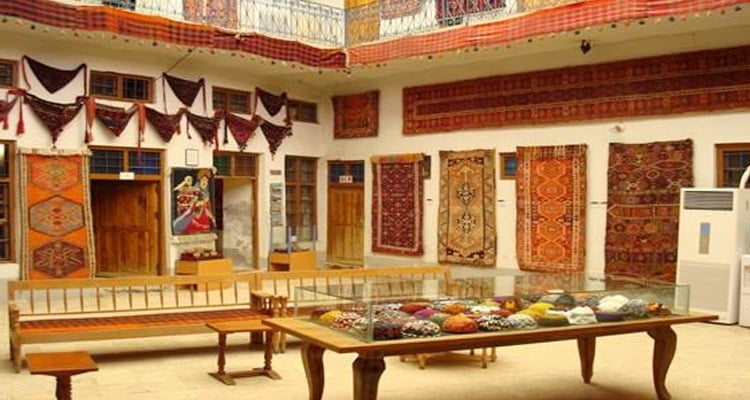
8. Calico Museum of Textiles
The Calico Museum of Textiles is based in Ahmedabad, Gujarat, in western India. The Sarabhai Foundation is in charge of the museum. Gautam and Gira Sarabhai, two industrious siblings, created the museum in 1949. Ahmedabad had a thriving textile industry at the time. In the heart of the textile industry, the Calico Mills served as the museum’s first home. The museum was moved to the Sarabhai House in Shahibaug in 1983 as the collection developed.
Textile collection
The textiles on display include Mughal and regional monarchs’ court textiles from the 15th to 19th century. Regional embroideries from the nineteenth century, tie-dyed textiles, and religious textiles are also shown. Ritual art and sculpture, temple hangings, miniature paintings, South Indian bronzes, Jain art and sculpture, and furniture and crafts are featured. There are further exhibits dedicated to textile methods as well as a library. The museum was instrumental in developing the curriculum for textile design classes at the famed National Institute of Design, located in Ahmedabad.
The museum administrators take great care of the exhibits on display. The trees that surround the museum complex protect the textiles from dust, pollution, and temperature changes. To extend the life of the textiles, the relative humidity inside the museum is likewise managed, and the lights are muted between visitation hours.
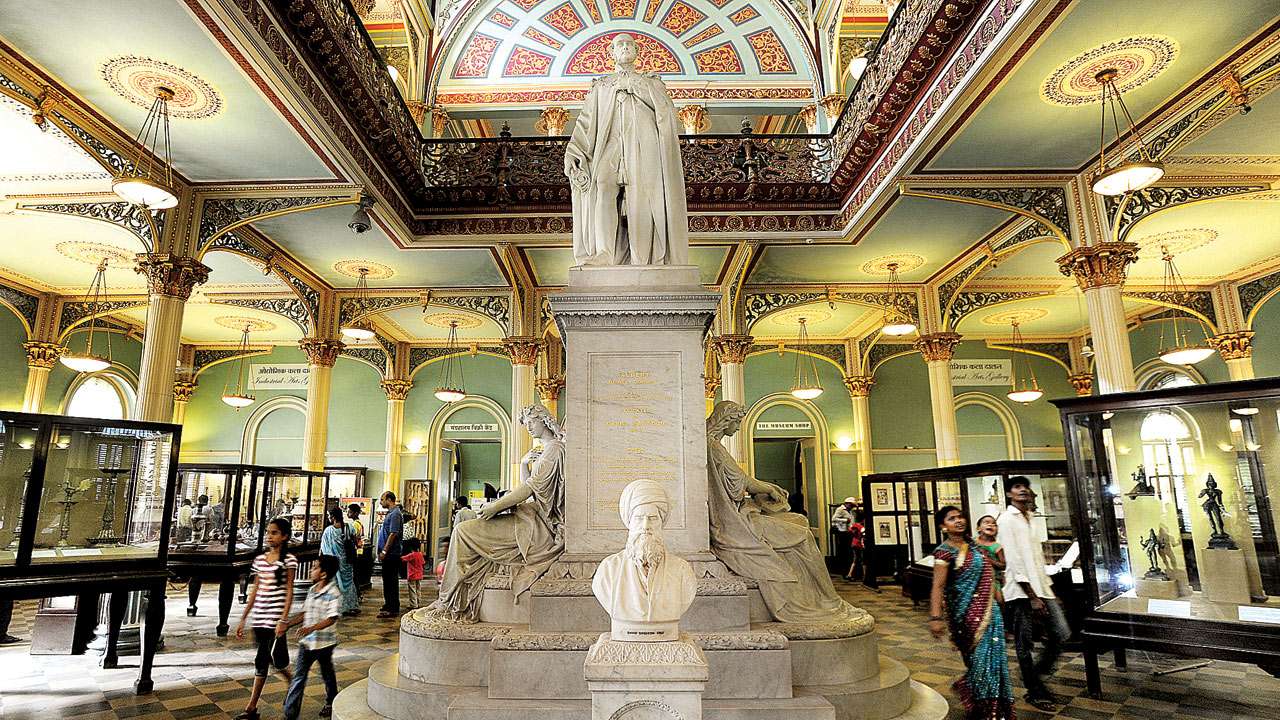
9. Dr. Bhau Daji Lad Museum
The Dr Bhau Daji Lad Museum in Mumbai’s oldest museum. It was founded in 1855 as a decorative and industrial arts treasure house and was later renamed in honour of Dr Bhau Daji Lad. It is located near Byculla Zoo in Byculla East.
Awards and Recognition
After being rebuilt by conservation architect Vikas Dilawari, the Museum received Unesco’s Asia-Pacific Award of Excellence in Cultural Conservation in 2005.
For its commitment to quality, ongoing innovation, and customer happiness, the Museum got the International Quality Crown Award in the gold category in 2016.
Governance
The Museum is run by a public-private collaboration, an Indian cultural institution. The Greater Mumbai Municipal Corporation, the Jamnalal Bajaj Foundation, and the Indian National Trust for Art and Cultural Heritage are all part of the collaboration (INTACH).
The Museum’s Honorary Director is Tasneem Zakaria Mehta, and it is governed by a Board of Management and Trustees that includes Mumbai’s Mayor and Municipal Commissioner.
Collections
It has a vast collection of archaeological artefacts, maps, and historical images of Mumbai and clay models, silver and copper utensils, and costumes. A 17th-century manuscript of Hatim Tai is among the museum’s notable holdings. It also houses the Kala Ghoda statue, which is well-known. The monolithic basalt elephant sculpture retrieved from the sea, which originated on Elephanta Island, is displayed outside the museum (Gharapuri Island).
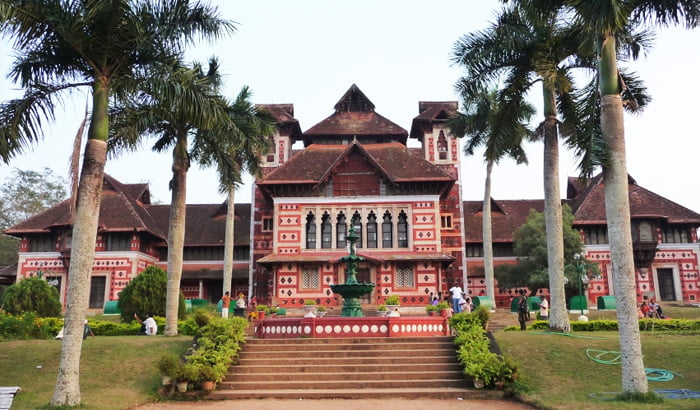
10. Napier Museum
The Napier Museum is a natural history and art museum in Thiruvananthapuram, Kerala, India. The Trivandrum Zoo, one of India’s oldest zoological parks, is located on the grounds of the Museum. In 1857, the zoo was founded on 55 acres (220,000 m2) of land. A different art gallery, the Sree Chitra Art Gallery, was created in 1935.
The Department of Museums and Zoos, a component of Kerala’s Department of Cultural Affairs, oversees the collection of museums and the zoo.
Edited and published by Ashlyn Joy




